A Medieval Synagogue in Toledo, Spain
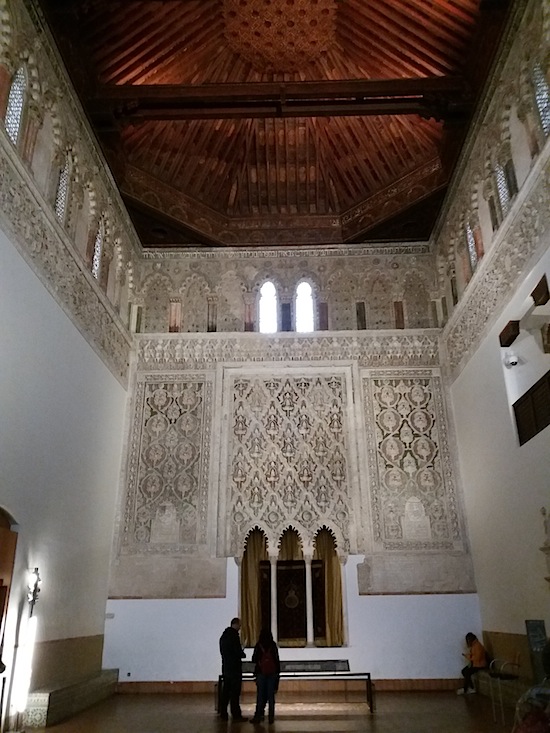
In my last post, I talked about an early Christian church and some Visigothic remains in Toledo in central Spain. Toledo was a mix of cultures during the Middle Ages, with Christian, Muslim, and Jewish communities all leaving their mark. The city is home to an excellent Sephardi Museum housed in a medieval synagogue.
The synagogue was founded in 1356 by Samuel ha-Levi Abulafia, Royal Treasurer to King Pedro of Castile and León. It was attached to Abulafia’s palace and intended as a private house of worship.
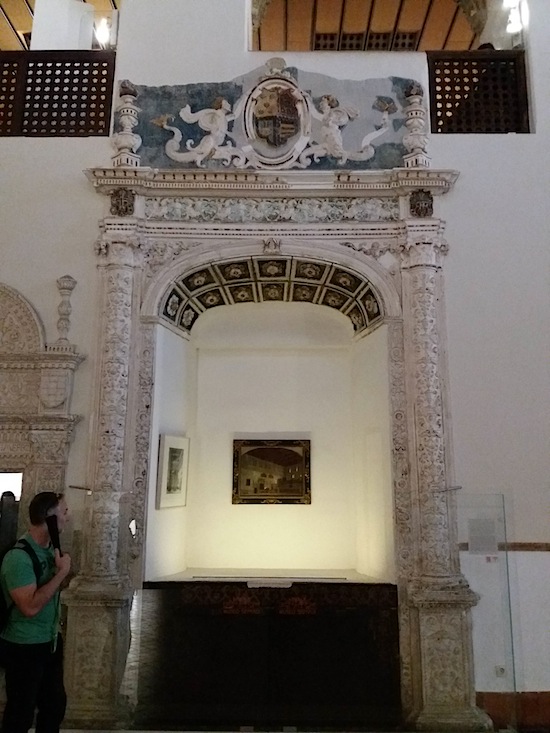
This ornamentation dates from when the building was a church
While some Jews had risen to high office in Spain, the community still faced persecution. When the Black Death ravaged Toledo’s population in 1348, many blamed it on the Jews and committed a terrible pogrom. King Pedro may have allowed the construction of the synagogue as compensation. By law, synagogues were supposed to be smaller and lower than neighboring churches and undecorated. Abulafia’s synagogue flouts these regulations, and the inscriptions in Hebrew praising King Pedro hint that the king had decided to look the other way.
The interior is well preserved and consists of carved stucco walls in the Nasrid style called Yeseria. This decoration is similar to synagogues I’ve visited in Córdoba and Tangier.
Abulafia eventually fell out of favor with the king and was executed in 1360. After the Jews were expelled from Spain in 1492, the synagogue was turned into a church. Now it’s a museum detailed the life of the Jewish community.
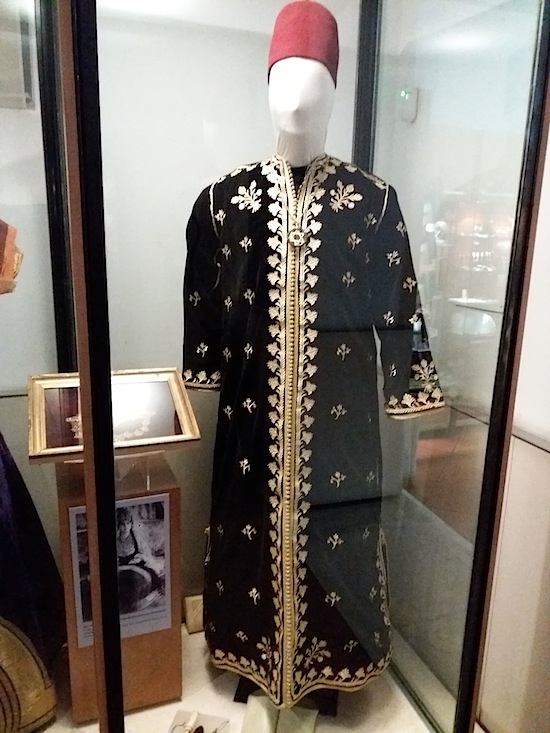
Male costume, 18th-19th century
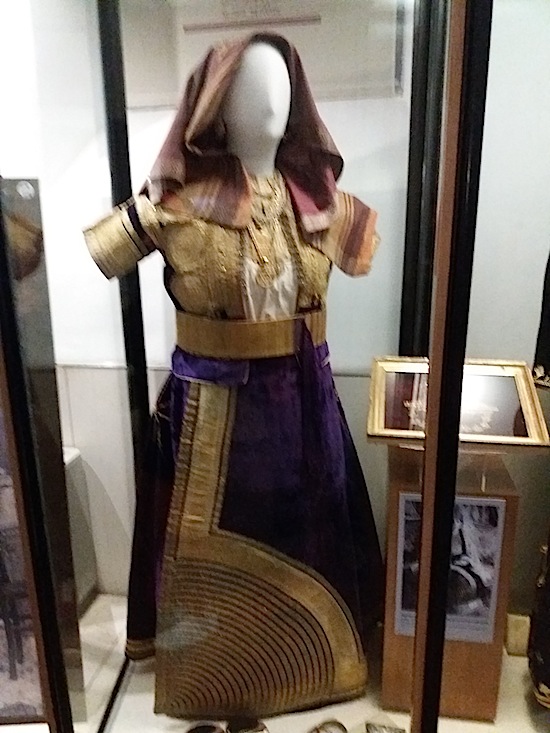
Female costume, 18th-19th century
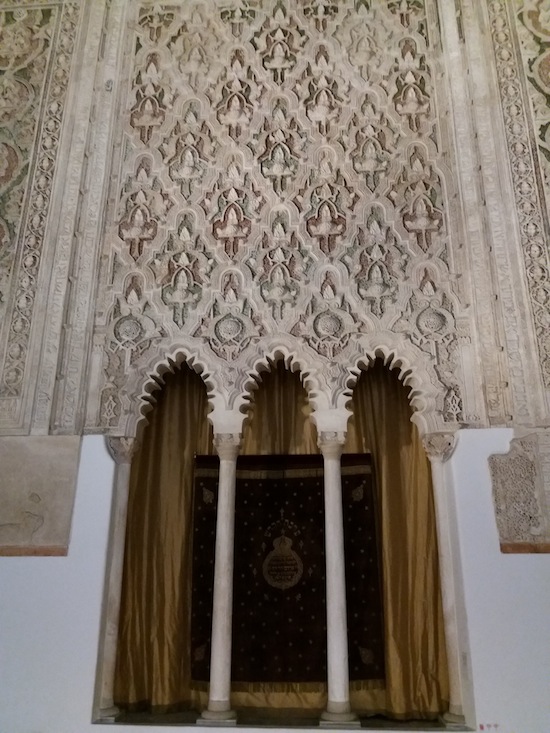
Photos copyright Sean McLachlan. More below!
Sean McLachlan is the author of the historical fantasy novel A Fine Likeness, set in Civil War Missouri, and several other titles. Find out more about him on his blog and Amazon author’s page. His latest book, The Case of the Purloined Pyramid, is a neo-pulp detective novel set in Cairo in 1919.